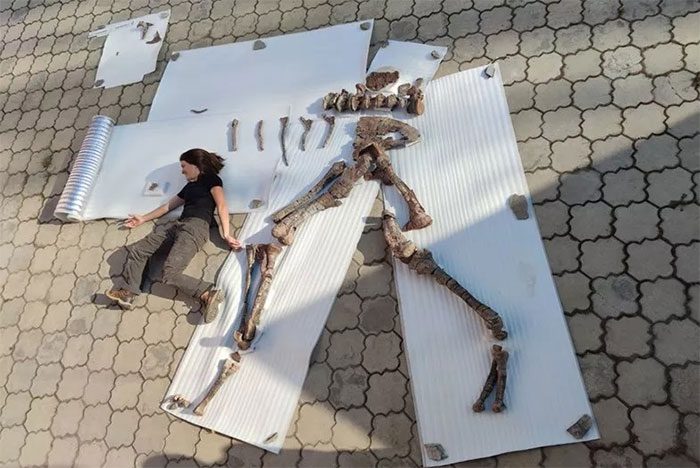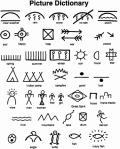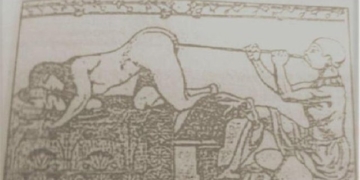The 165 Million-Year-Old Monster Alpkarakush kyrgyzicus is a Previously Unknown Species.
According to Newsweek, paleontologists have unearthed fossilized remains of two Jurassic monsters from the Balabansai Formation in the northern part of the Fergana Basin in Kyrgyzstan.
These have been identified as two theropod dinosaurs belonging to a species that has never been documented anywhere in the world.
This is also the first discovery of Jurassic theropod specimens in Central Asia.

A team member lies next to the skeleton of an adult monster for size comparison – (Photo: Oliver Rauhut/NEWSWEEK).
The new species has been named Alpkarakush kyrgyzicus, characterized as a gigantic carnivorous monster.
Among the two specimens, the adult was identified to be around 17 years old at the time of death, and its estimated living length was 7-8 meters.
According to a description published in the scientific journal Zoological Journal of the Linnean Society, the specimens obtained by the scientists include several skull bones, vertebrae, sacral bones, fragments of chest bones, pelvic bones, and limb bones.
Although not a complete skeleton, the number of bones was sufficient for paleontologists to visualize and classify the creature.
The two Alpkarakush kyrgyzicus lived approximately 165 million years ago, during the middle Jurassic period.
The discovery of two specimens in close proximity suggests that this species exhibited social behavior.

An illustration showing the ferocious appearance of the Jurassic carnivorous monster – (Photo: Joschua Knüppe).
As theropod dinosaurs, they would resemble the famous Tyrannosaurus rex and feature characteristics such as hollow bones and three-toed limbs, primarily walking on their two hind legs and being carnivorous, with small forelimbs…
This terrifying group of dinosaurs first appeared around 230 million years ago, at the end of the Triassic period.
This new species belongs to the Metriacanthosauridae family, a group of theropod dinosaurs ranging from medium to large sizes, characterized by a high, curved skull, long neural spines shaped like discs, and slender hind legs.
This dinosaur family may have originated in Southeast Asia, then dispersed into what is now China—where many specimens have been found—and subsequently spread into Central Asia.
According to Professor Oliver Rauhut from the Paleontology and Geology Collection of Bavaria, Germany, and the leader of the multinational research team, the new discovery in Kyrgyzstan fills a significant gap in our understanding of Jurassic theropod dinosaurs.





















































